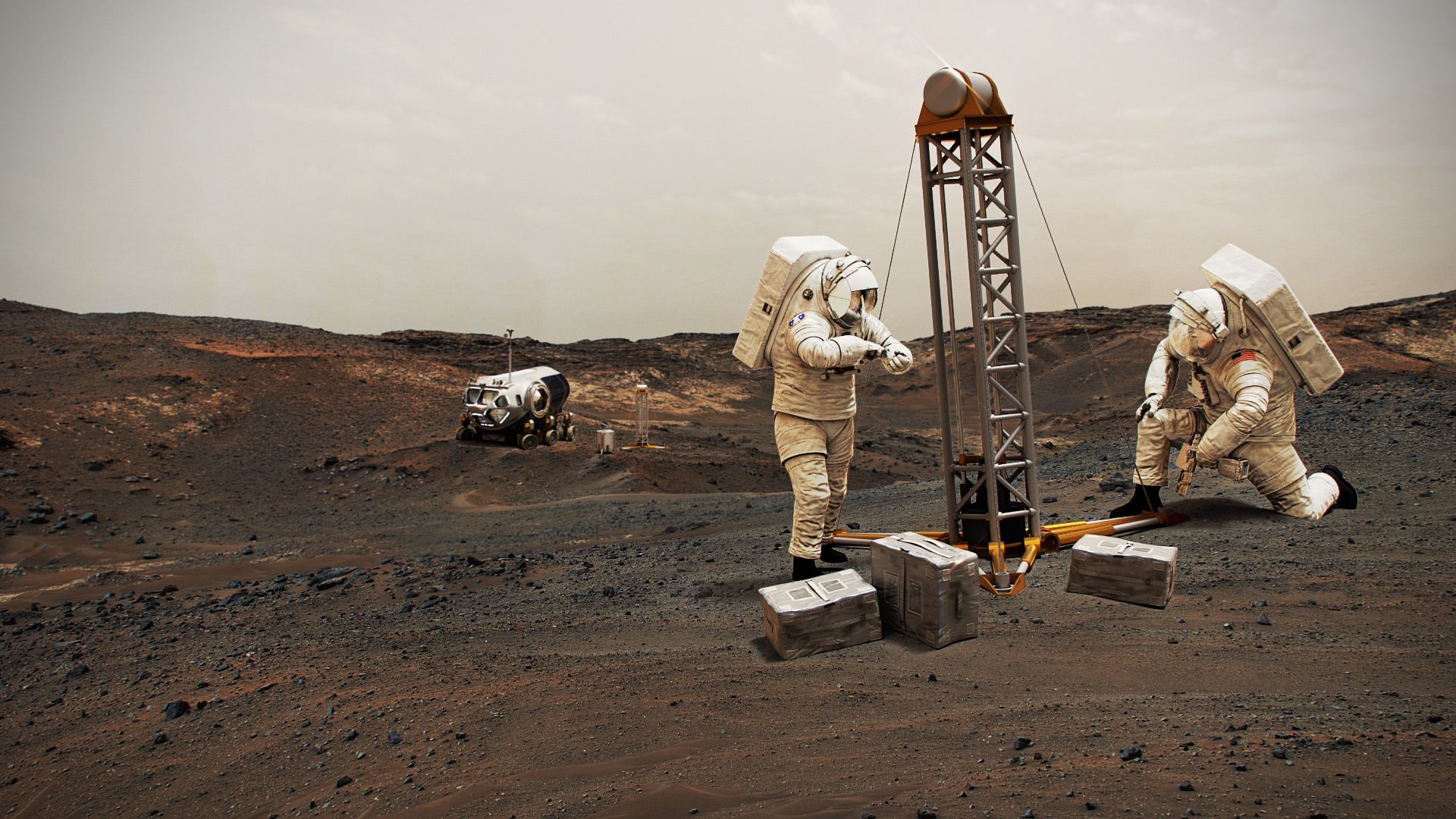
Mars has called to us since ancient times. To humans across the eons, the red-tinted speck glinting in the night sky has garnered special attention, with myths and legends wound around its possible ties to Earth. As we observed Mars with telescopes, this fondness graduated into a scientific fascination.
Within only about the last half century, as science has continued to advance, we gained the ability to land scientific instruments on the Red Planet. Beginning with the Viking probes in 1976 and continuing through the Perseverance rover and its flying companion, the Ingenuity helicopter drone, this robotic exploration has allowed humans to discover complex secrets of Mars.
But this is far from the end of our ambitions. Indeed, humans have planned crewed missions to Mars since at least as far back as the 1950s. Scientists and CEOs alike have crafted intricate ideas to establish a presence on the Red Planet, ranging from small-scale research outposts to major settlements. Elon Musk’s plans to put a million people on Mars stand as a particularly bold example.
Yet even with all the money and influence being poured into the goal of putting boot prints in the Martian regolith, there remain considerable doubts that we will ever actually get there. Between economic and ecological problems mounting here on Earth and the major challenges facing even the most basic mission to send humans to Mars, the impetus to spend the money necessary to fund such an initiative has ebbed with the political tides perhaps more so than any other space mission.

The right equipment
Whether it be the dangers of deep-space radiation or the possibility of failure in the equipment that keeps them alive, the astronauts who travel to Mars will have to overcome dangers before, during, and after their trip to the Red Planet. But as the thousands of applications submitted to the now-defunct Mars One enterprise clearly show, plenty of people would gladly sign up.
What is it about Mars that draws people with such gravitas? It is a barren, desolate place, after all. That much has been clear from the earliest flybys in the 1960s. The days in which dreamers like Percival Lowell and Edgar Rice Burroughs imagined Mars as a flawed but still inviting destination are long gone, replaced by an era in which futurists argue over whether it makes sense to terraform Mars, thereby altering the Red Planet into something more closely resembling Earth. (And essentially no one realistically addresses whether such a thing is actually possible.)
But the fascination remains, and the call of Mars is still as loud as it was to the futurists of the past. There seems to be something of a destiny in this call that makes it all but inevitable that humans will one day step down onto the surface of Mars, much as we once first stepped onto the surface of the Moon.
This history itself is instructive. In the earliest days of the Space Race, many people thought it inevitable that humans would one day set foot on the lunar surface, even if it took decades as opposed to the scant few years promised by visionaries like John F. Kennedy. But the illusion of inevitability is not proof of its existence in fact, as many failed predictions through history have shown.
Even the Moon landings were subject to faulty predictions. The New York Times’ 1920 declaration that rockets could not fly through space due to the lack of air comes readily to mind. Yet on July 21, 1969, two men from Earth stepped onto the surface of the Moon, proving all but the most determined doubters wrong. Will their spiritual successors at NASA and other space agencies one day follow suit on Mars? The first person to step on Mars likely walks among us now, and their moment in history may be coming soon.
The first step
Let’s look at things as they are now. Earlier in 2023, NASA and DARPA announced a partnership to design nuclear rockets, which some attest could be the first step toward a Mars mission. Elsewhere, analog habitats funded by organizations like the Mars Society simulate missions to Mars to prepare potential travelers for the journey. And futurists like Robert Zubrin and Elon Musk draw up plans to send people to Mars by as soon as the late 2020s, with Musk claiming he can establish a colony of one million people by 2100.
But does any of this mean that Mars pulls us toward its shores any more intensely now than at the height of Space Age optimism, when visions of grand cities on Mars seemed near to fulfillment? The basic fact is that, when humans set our minds to do something, we see it done much more often than not. The South Pole, the summit of Everest, and of course, the Sea of Tranquility are all evidence of that.
So while the exact details of a future Mars mission are unclear—where it will take place, who will be the first to step out of the spacecraft, what flag they will bear (if any), and perhaps most importantly, when it will happen?— the possibility that it does happen is much larger than the chance we will never set foot on Mars. It may take decades, but even if it takes another century, it seems likely that someone will one day become the “Neil Armstrong” on the Red Planet. When that one small step takes place is anyone’s guess, but the high probability that it will happen seems undeniable.









